Types of Organizational Structures
There are several organizational structures, including:
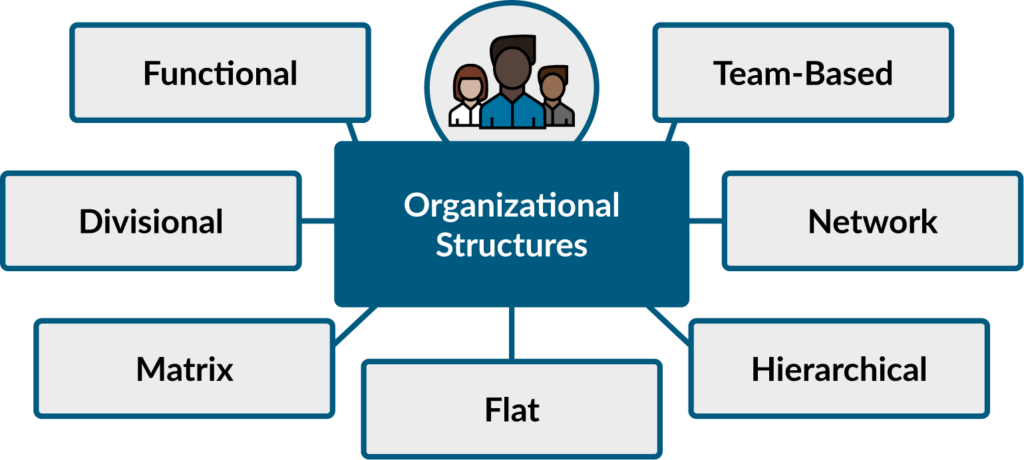
- Functional structure: where the organization is divided into departments based on functions or areas of specialization, such as marketing, finance, operations, etc. Basically, grouping employees by their function.
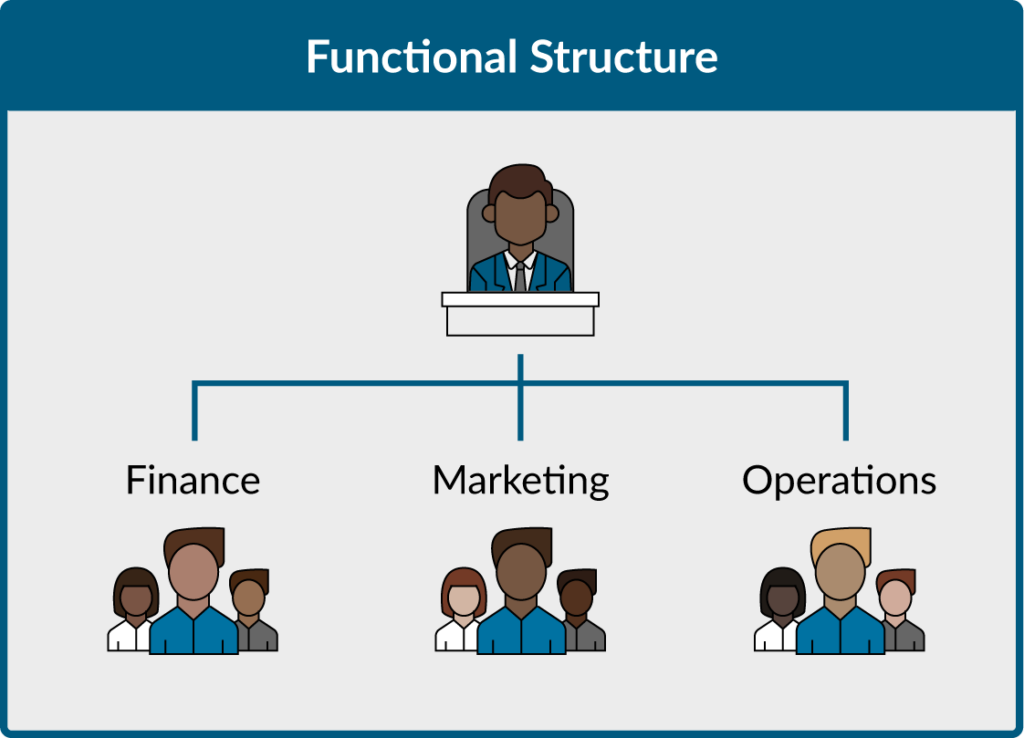
- Divisional structure: the organization is divided into separate business units or divisions, each with its own tasks, resources, and objectives. This type of structure groups employees by product or service line, such as having separate divisions for different product categories.
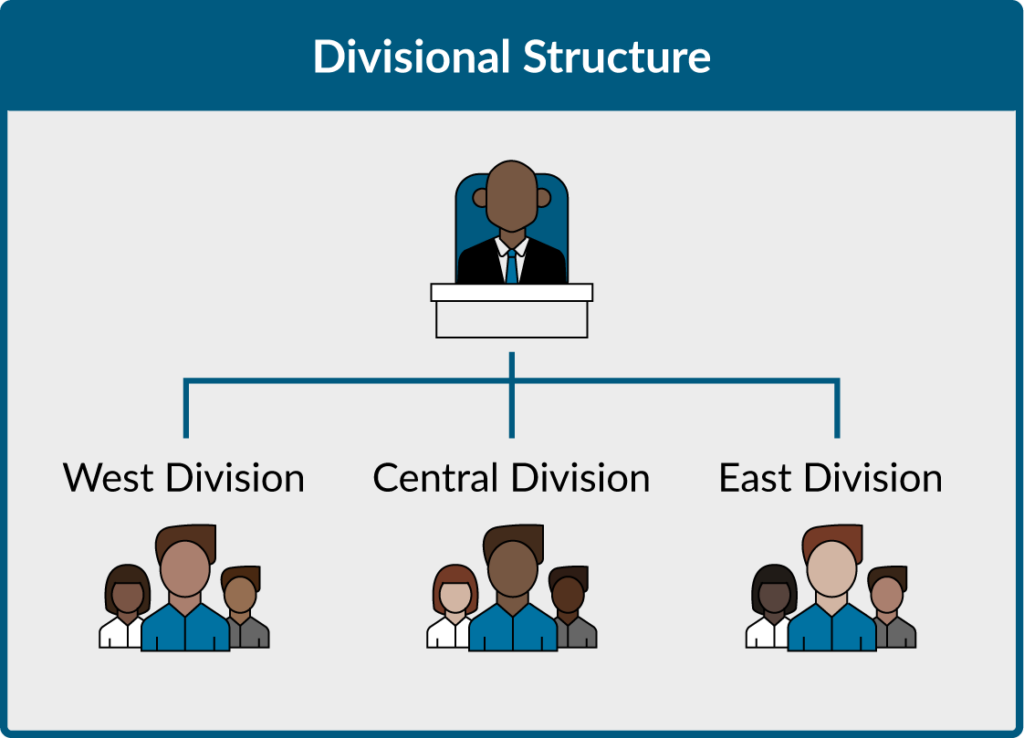
- Matrix structure: combines functional and divisional structures to create project teams that can work across different departments and projects. Allowing employees to work in both horizontal and vertical groups.

- Flat structure: where the organization has few or no levels of management, with most employees reporting directly to the CEO or other top executive. This type of structure has few levels of management and a wide span of control, allowing for more autonomy and decision-making power among employees.
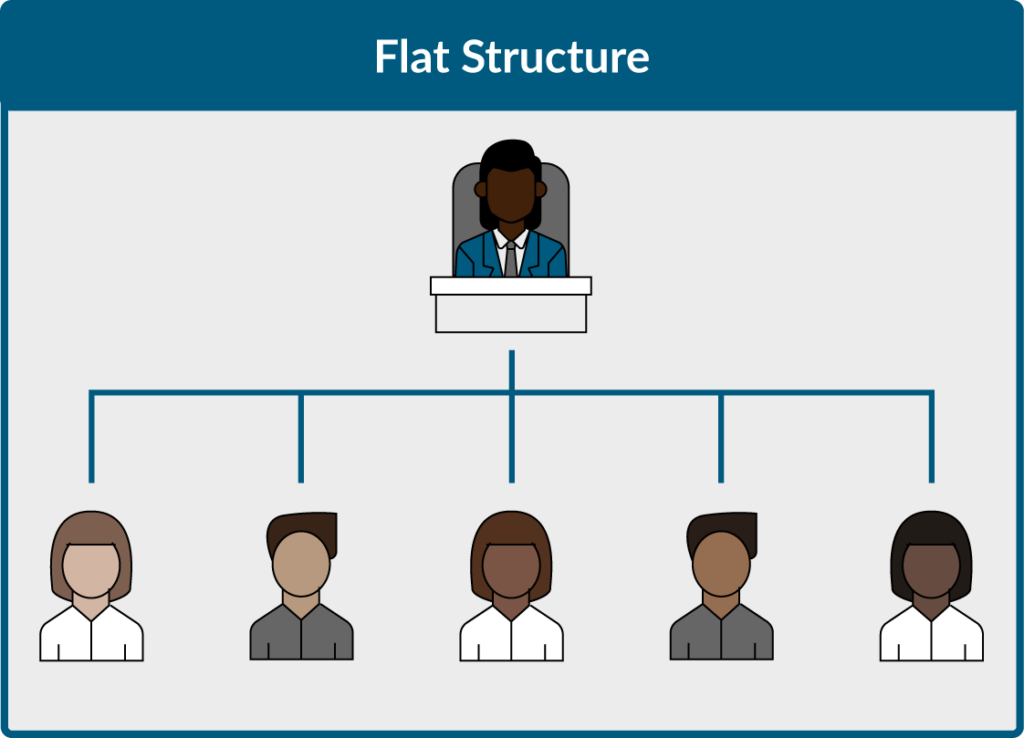
- Hierarchical structure: where the organization has multiple levels of management, with clear lines of authority and communication channels.
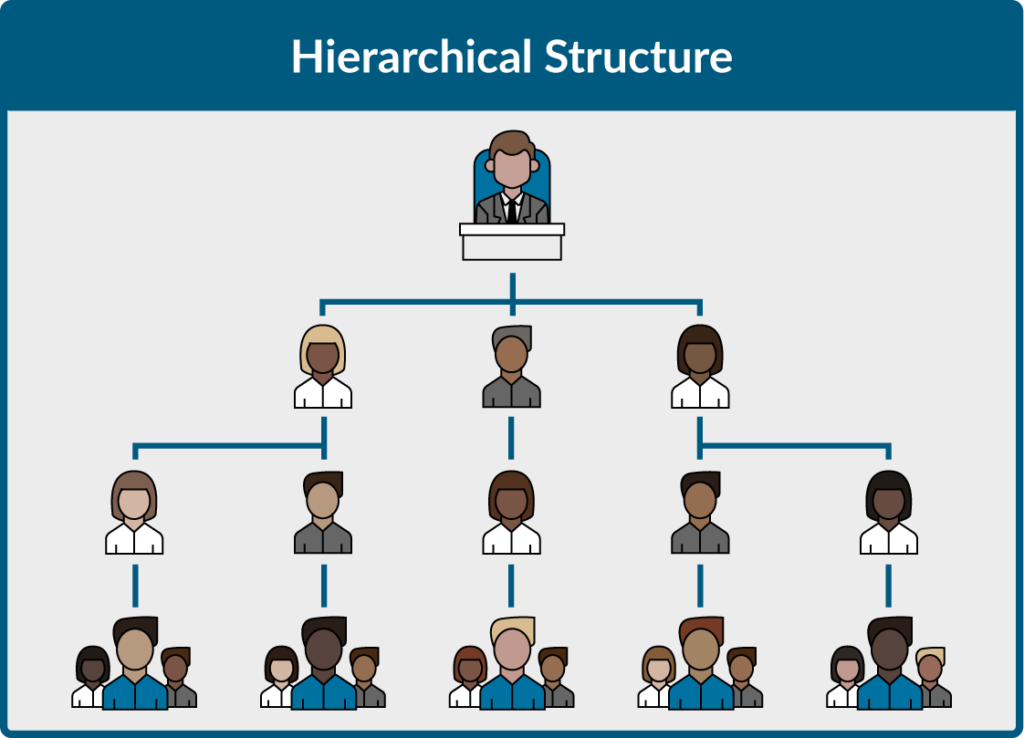
- Network structure: the organization comprises independent companies or individuals collaborating to achieve common goals. This structure involves outsourcing and partnering with other organizations to complete tasks and achieve goals.
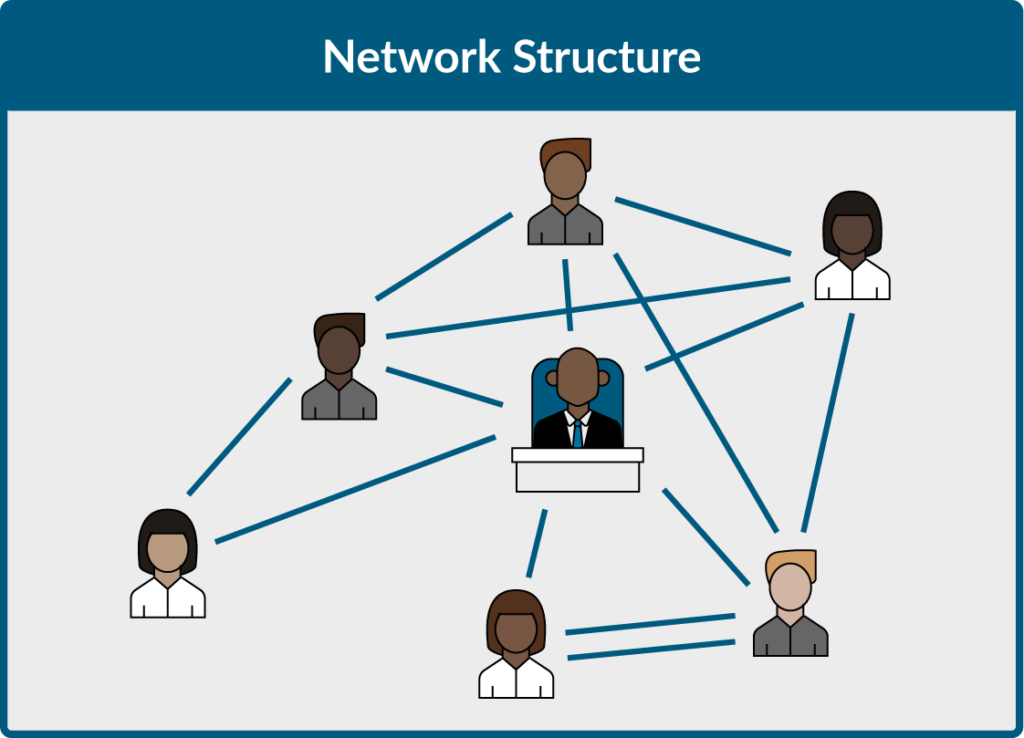
- Team-based structure: the organization is structured around teams or work groups that are empowered to make decisions and work collaboratively to achieve goals. Team-based structures are those in which employees are grouped based on their function, project, or team they are working on. Here are some examples (also discussed in our Essential Management Course):
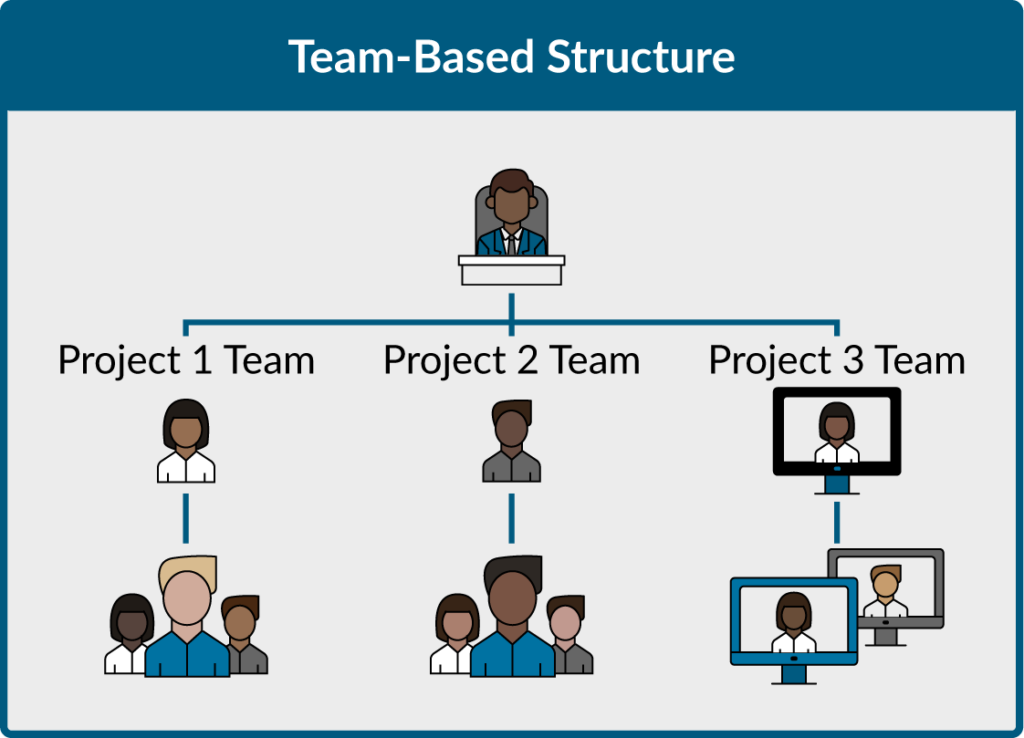
- Cross-functional teams: This type of team structure is made up of individuals from different departments or functions who work together to complete a specific project or task.
- Self-managed teams: In this structure, the team controls the planning, organizing, and decision-making processes related to their work. The team also takes responsibility for the outcomes and results of their work.
- Project teams: These teams are formed to work on a specific project, and once the project is completed, the team is disbanded.
- Virtual teams: These teams work together from different locations, usually using technology to collaborate and communicate.
- Problem-solving teams: These teams are created to solve specific problems within the company.
Video 13 Here
Patagonia is a well-known outdoor clothing and gear company widely recognized for its ethical business practices. The company’s organizational structure reflects its commitment to sustainability and environmentalism, with a decentralized structure emphasizing collaboration and employee empowerment.
Mondragon Corporation is a worker-owned cooperative based in the Basque Country of Spain. The company operates in various industries, including finance, retail, and manufacturing, and has a unique organizational structure where all employees are also members and owners of the company. Mondragon operates on a democratic decision-making model, where every member has an equal vote in company decisions, regardless of their position or tenure. This structure has led to high employee engagement, satisfaction, and a commitment to social responsibility and sustainability.
Insert Video 13 Here
Managers need to know about these structures to choose the best structure for their organization based on the company’s goals, culture, and the work that needs to be done. Furthermore, understanding organizational structure ensures that team members clearly understand reporting lines, roles, and responsibilities. Understanding the structure can also help managers identify areas for improvement in workflow and communication and make necessary changes to increase efficiency and productivity. Additionally, a well-designed organizational structure can help attract and retain top talent. Employees are more likely to feel empowered and engaged when they understand their role within the organization.
Understanding the different types of organizational structures can help managers create a structure that supports the company’s mission and values, increases efficiency and productivity, and improves employee satisfaction and engagement.